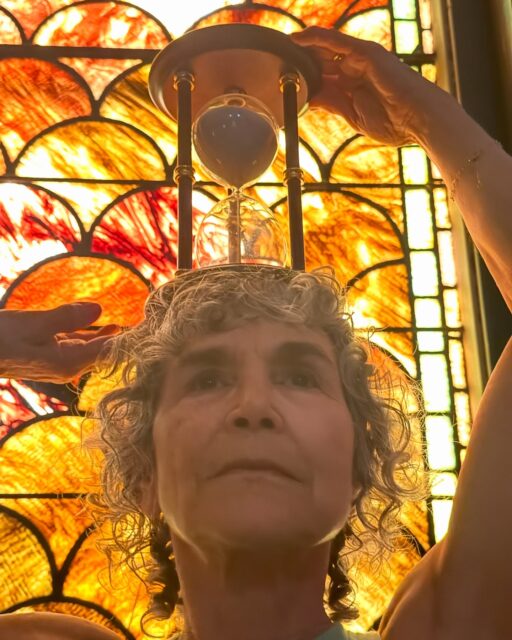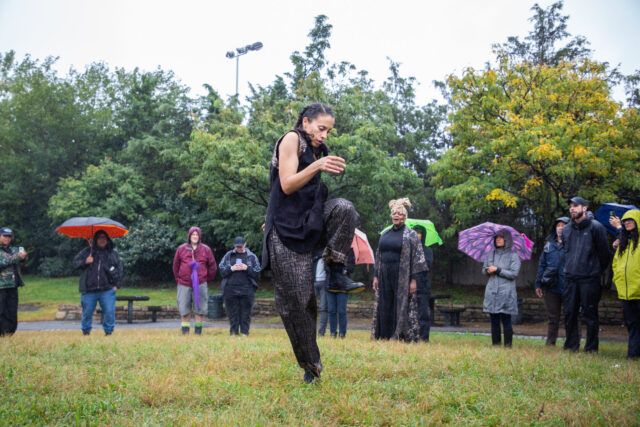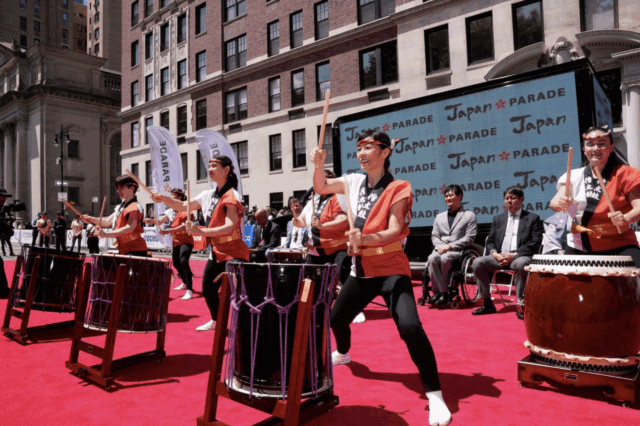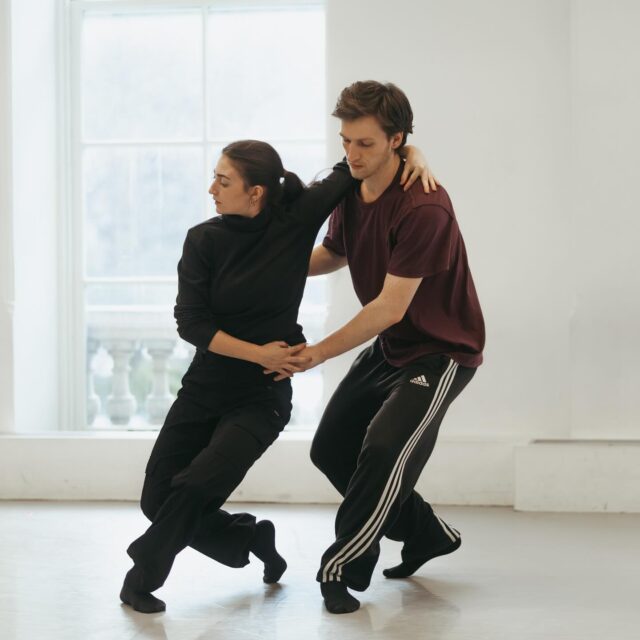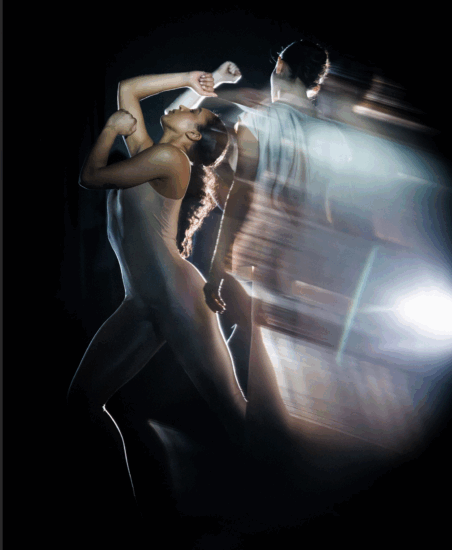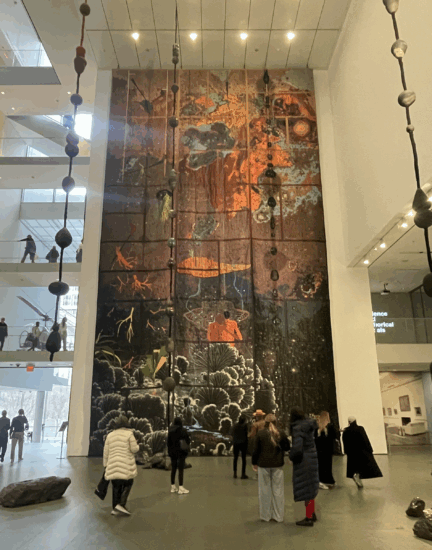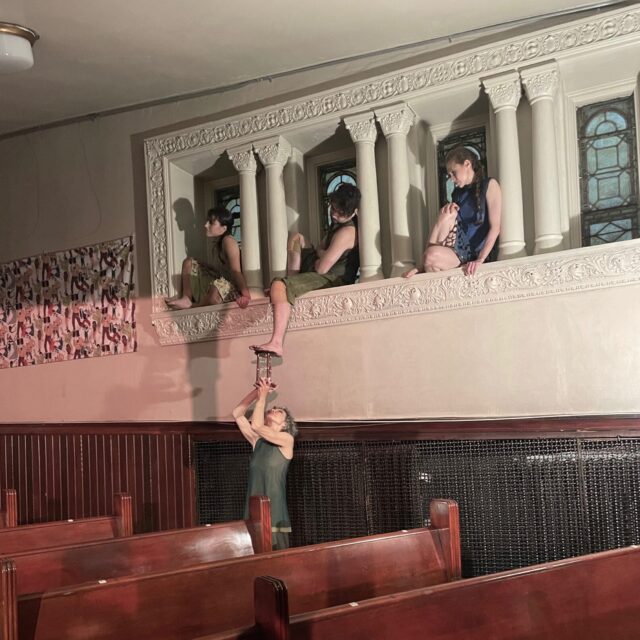
Jody Oberfelder makes use of nearly every nook and crannie of the Center at West Park for Story Time (photo by twi-ny/mdr)
STORY TIME
The Center at West Park
165 West Eighty-Sixth St. at Amsterdam Ave.
Friday, May 16, and Saturday, May 17, $24–$30, 7:30
www.centeratwestpark.org
www.jodyoberfelder.com
New York–based director, dancer, choreographer, and filmmaker Jody Oberfelder activates the endangered Center at West Park in the landmarked West Park Presbyterian Church with the inspiring, exhilarating Story Time, one of the best site-specific works of her long, distinguished career.
As the audience enters the soaring space, activity begins subtly, then with increasing urgency. Mariah Anton Arters, Caleb Patterson, and Andi Farley Shimota are at rest in niches on a windowsill but soon hop down and proceed amid the pews and columns with unbounded energy. Michael Greenberg walks slowly up and down the aisles perusing a red book, stopping to point out a line for audience members to read. A smiling Oberfelder approaches people, holding out an hourglass for them to ponder. Nyah Malone is spread across a piano, eventually sitting on the bench and playing a few notes. Shimota is in a back room, balancing apples and oranges until Caleb Patterson knocks over one of her cairns and runs away. Grace Bergere moves ever-so-carefully around the pews, magically spinning a red ball representing the globe.
The audience is encouraged to immerse themselves in the action, not just find a seat but wander around and engage with the performers (without obstructing them); for example, I tried to build a few fruit cairns myself but failed miserably. Be sure to check out Nick Cassway’s two wallpaper collages of the performers and Tine Kindermann’s stunning dioramas of fairy tale classics.
What follows are eighteen vignettes on a proscenium stage where the church altar would have been, in front of a large pipe organ. Gargoyles come to life as Bergere, who Oberfelder met when the singer was busking in Tompkins Square Park, sings her original composition “A Little Blood” on the lip of the stage. Greenberg and Arters become Merlin and Morgana, respectively, dancing to isomonstrosity’s “I Hope She Is Sleeping Well.” Shimota is a Hungarian princess and Patterson a potential suitor, interacting to Villa Delirium’s medieval-style folk ballad “Hungarian Countess” and the Parisian Marie Antoinette sex parable “Marie.”
Patterson and Shimota are tempted by Kindermann’s gingerbread cookies in a retelling of Hansel and Gretel while Kindermann sings live. Oberfelder dances with a broom, Greenberg mimics using a knife, Malone dangles a birdcage, and an apple entraps Patterson and Shimota. Bluebeard meets an ogre as Arters and Patterson perform a duet to Bergere’s “Billy,” with Bergere on harmonium and Kindermann on saw. Everyone comes together for a thrilling grand finale.
The ninety-minute Story Time boasts some of Oberfelder’s finest choreography, highlighted by breathtaking lifts and carries infused with an innate playfulness, incorporating a bevy of surprising objects and a charming scene involving small chairs and a table, with a few lovely nods to Pina Bausch. The vastly talented performers switch quickly between Katrin Schnabl’s costumes, which range from elegant dresses to a ratty hair shirt; Connor Sale’s lighting is soft and gentle.
Story Time is itself a fairy tale, an enchanting production that is part of the movement to protect and save the landmark church building while also investigating the stories we are told, and that we tell ourselves and each other, in this deeply divided time in America and around the world.
Near the conclusion, a musical interlude features Bergere on guitar as she and Kindermann sing lyrics by Oberfelder: “From the womb where they bled / In this place purple dread / But open your eyes, see / A pleasure awaits / Through myriad gates / The tail meets its head.”
Pleasures galore await all through the gates of the Center at West Park, which itself will hopefully have a happy ending.
[Mark Rifkin is a Brooklyn-born, Manhattan-based writer and editor; you can follow him on Substack here.]
